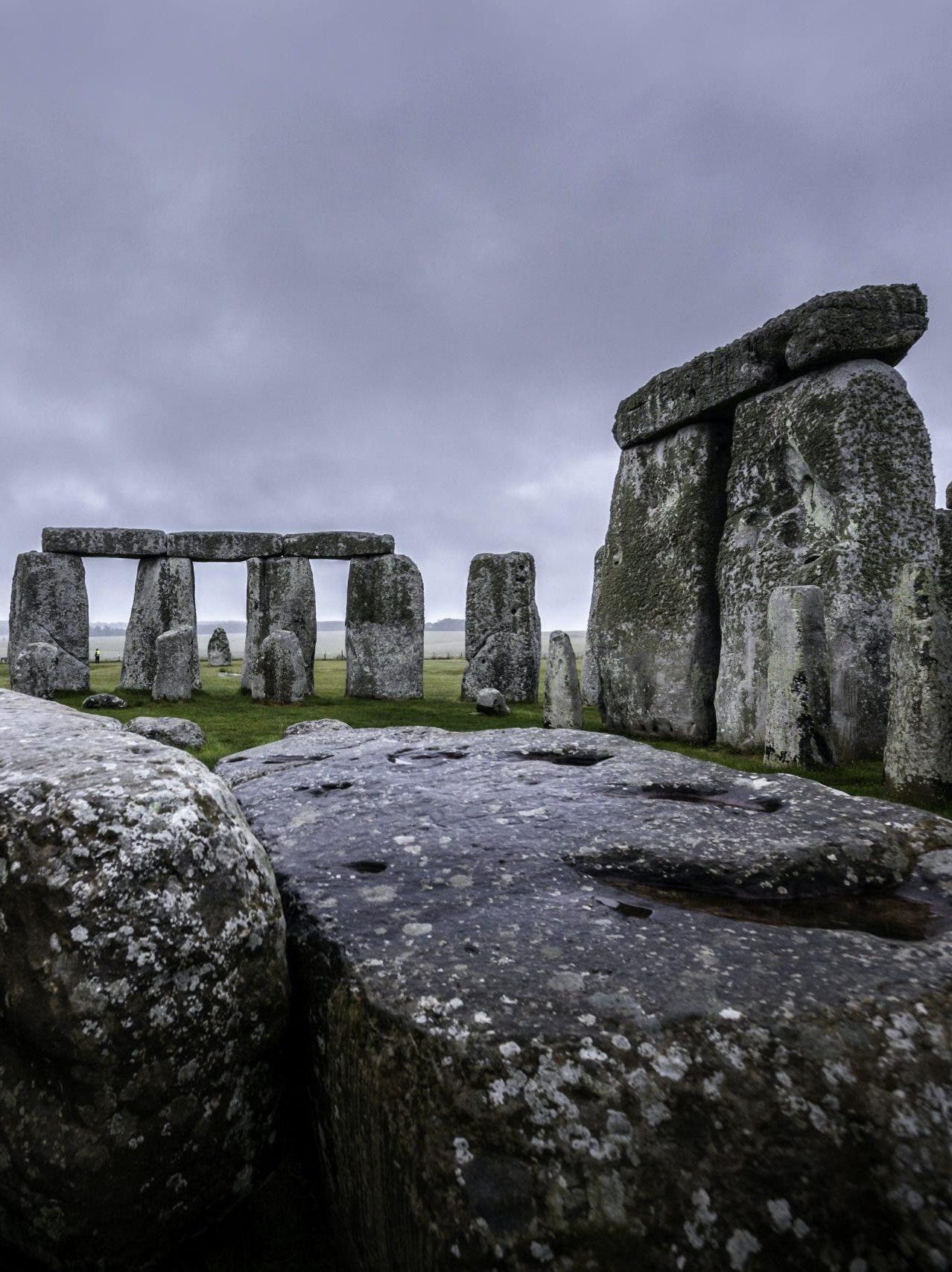Initial findings suggest there may have been up to 20 deep ditches surrounding the Stone Age human cult site and associated with the stone temple.
Previously, these trenches were thought to be sinkholes or reservoirs. However, the similarities between them prompted scientists to study them more closely. The aerial survey, which combined technologies such as ground-penetrating radar and magnetic field measurements, revealed a 4,500-year-old circular structure.
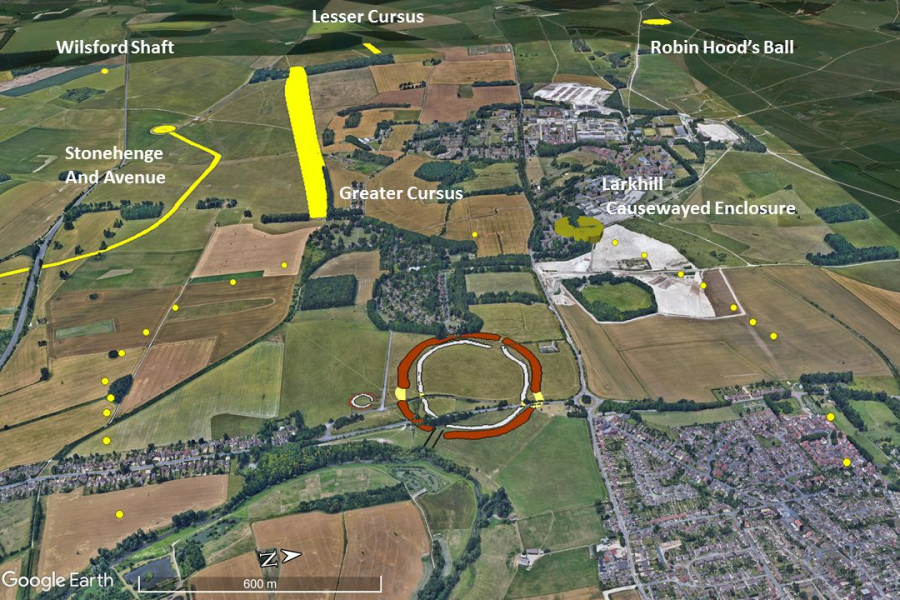
Yellow points mark the locations of new finds: Durrington Walls is marked by a brown circle, with Stonehenge in the upper left corner
Because Durrington Walls is located at the center of the giant pit, researchers believe the trench was a boundary around land that the ancients considered sacred. Stonehenge's location in relation to the summer and winter solstices represents the sun's sphere of influence. Meanwhile, the newly discovered trench may reveal ancient people's awareness of larger cosmic phenomena.
In addition to Durrington Walls, the moat also surrounds the Larkhill stonework, which predates Stonehenge by 1,500 years. The team is not sure whether the moat was used to guide or block access to the stonework, but it suggests that the stonework in the area was part of a complex cultural and spiritual tradition.

There are still many traces of human activities and living environment at that time that need to be studied from this newly excavated site.
The new discovery shows that Neolithic communities in Britain were highly developed and capable of great achievements in construction techniques. The researchers said that digging such wide and deep trenches with primitive tools was as impressive as arranging the giant stone blocks.
The new study was published in the journal Internet Archaeology on June 21, right at the time when sun worshippers often come to Stonehenge to celebrate the Summer Solstice, the day marking the end of spring and the beginning of summer in Britain and many Western countries or temperate regions.
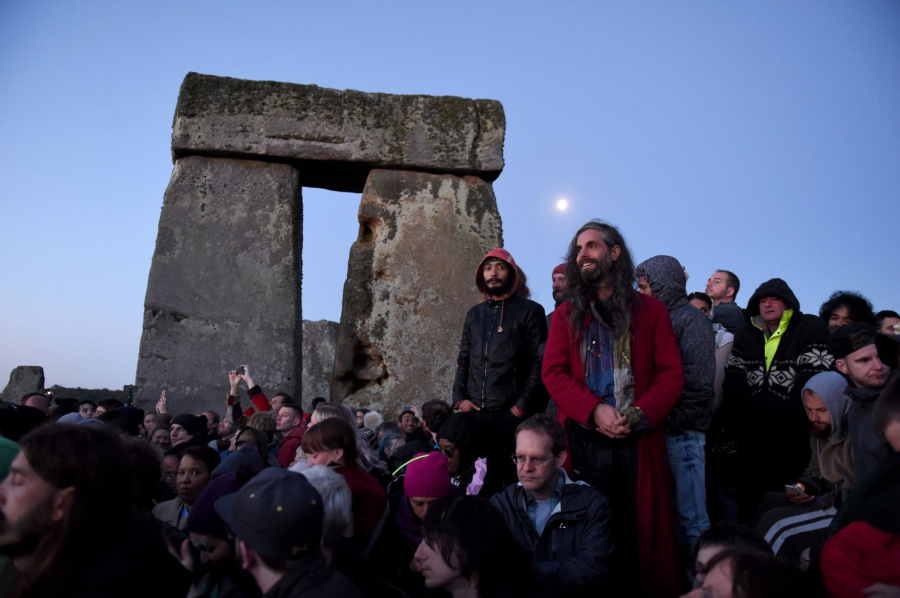
Every year thousands of people gather at Stonehenge to celebrate the summer solstice, as well as the beginning of summer.
Many researchers believe that Stonehenge was built by the ancient British as a giant astronomical calendar with the ability to accurately predict the appearance of writing, wheels or the discovery of the earth revolving around the sun. On the summer solstice, the sun rises from the Heel Stone in the east. The light shines straight on the central stones and the Altar Stone located in the west. On the winter solstice (December 21 or 22), this phenomenon is completely reversed and the sun will begin to rise from the opposite stone.
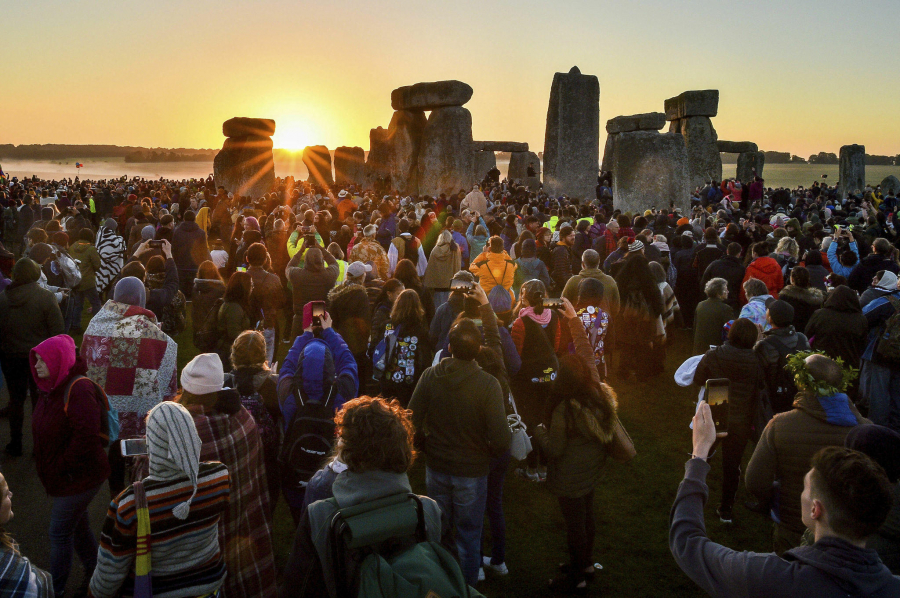

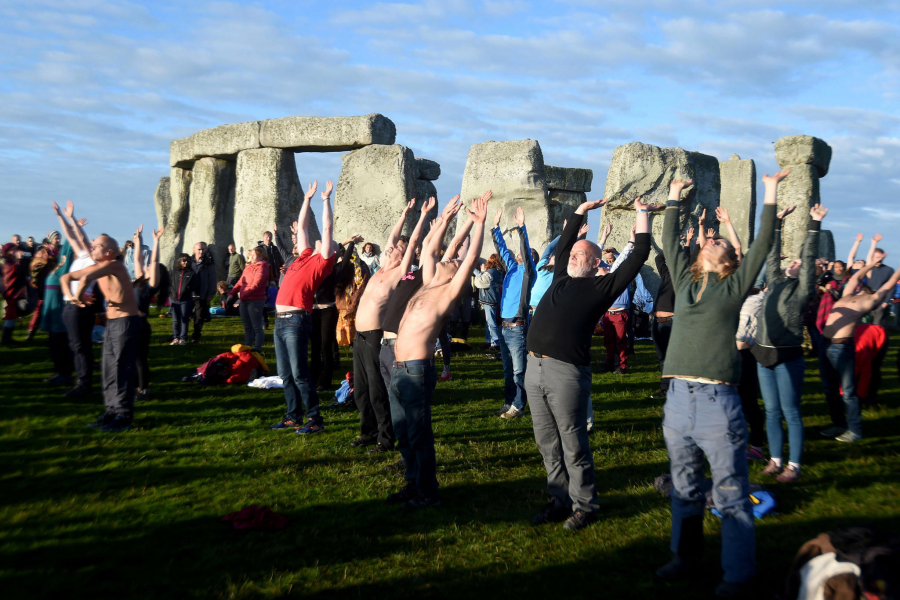
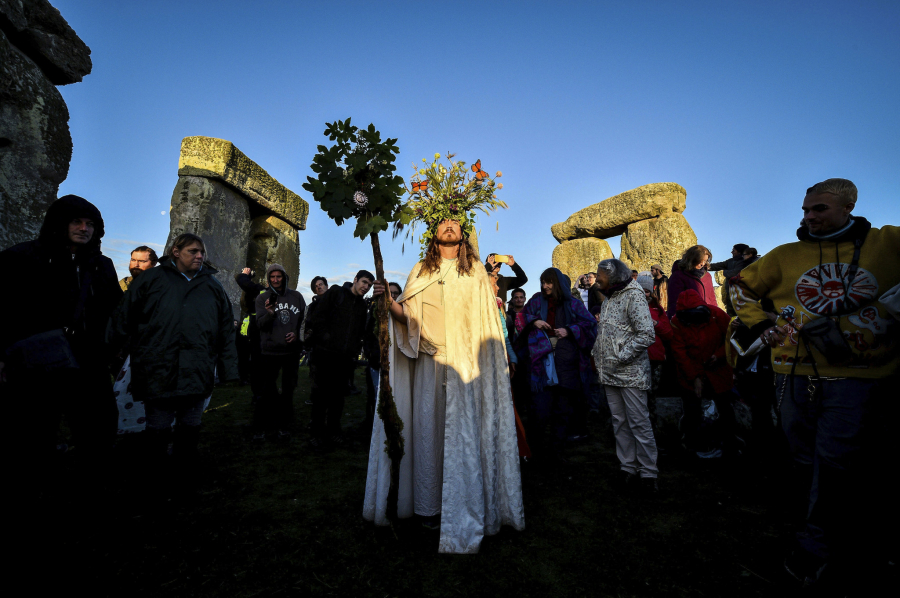
However, this year no one was able to visit Stonehenge because the Covid-19 ban on gatherings is still in effect in the UK.
According to existing research, scientists believe that the ancient Britons from the land that is now Anatolia (Türkiye) brought megalithic culture to the British Isles. In addition to Stonehenge, they also built settlements surrounded by earthen walls such as Skara Brae, Orkneys. Later, another group, coming from the steppes in the area of Ukraine to Kazakhstan today, arrived in Britain 4,500 years ago and occupied almost the entire island.
The work of a genetics team led by Professor David Reich, from Harvard Medical School in Cambridge, Massachusetts, suggests that up to 90% of the genes of the ancient Britons – the group that built Stonehenge – were replaced within just a few hundred years. However, it is thought that the stone structures continued to be used for religious purposes by ancient groups until the Bronze Age.

Stonehenge is a famous site, recognized by UNESCO as a World Cultural Heritage, but many questions about these large circular stone blocks remain unanswered.
Archaeological estimates suggest that the first stones of Stonehenge may have been erected 5,000 years ago. It was then repaired by later generations, and the current stone circle was completed around 2,500 BC. The deep earthen trenches surrounding the nearby worship site only appeared around 4,000 years ago, indicating that settlement and the use of large stones for worship may have lasted for thousands of years. Some historical sources in Britain believe that Stonehenge was worshiped by the indigenous people until the Romans arrived in Britain in 55 BC.





